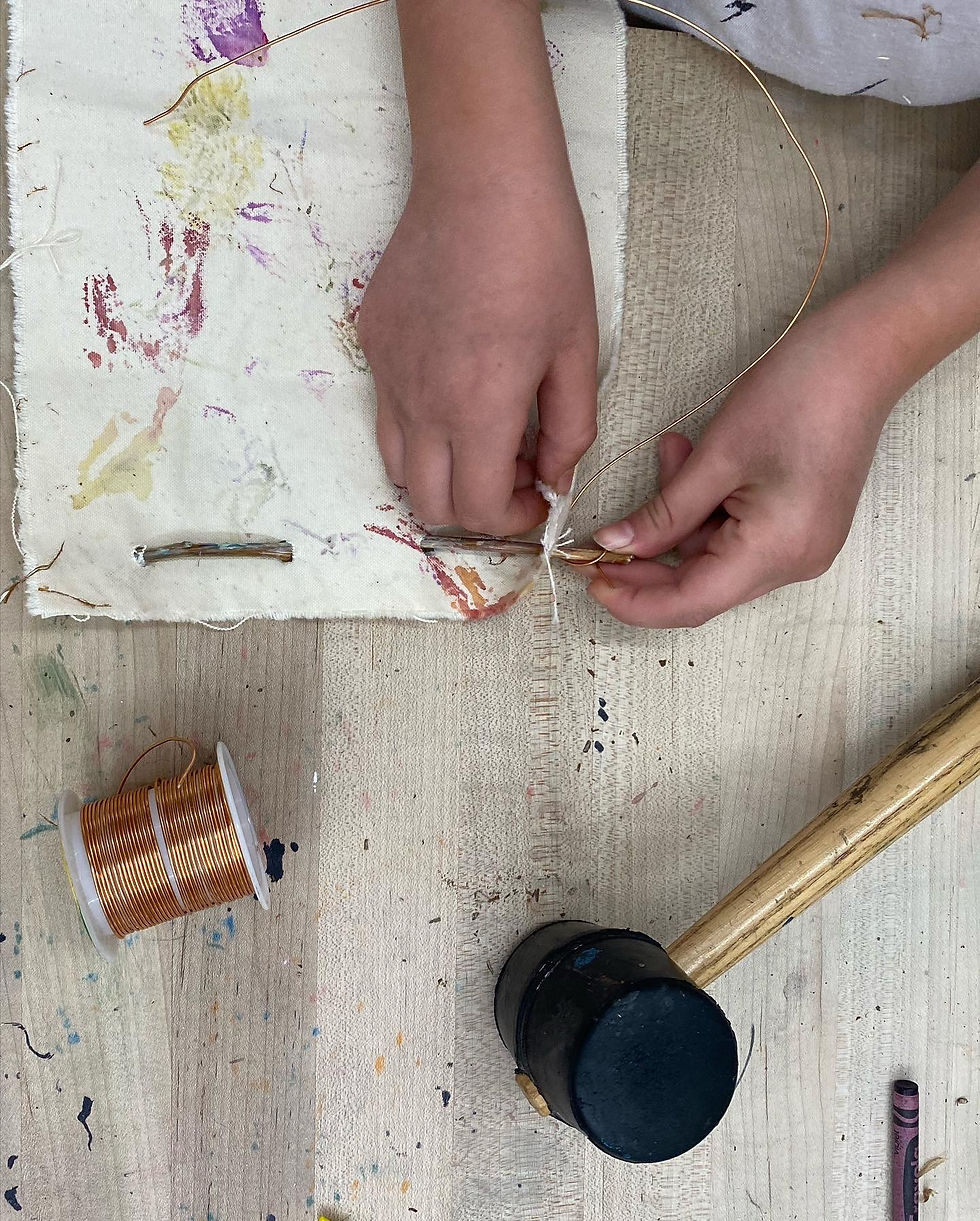- Creative Nature NYC

- Apr 2, 2024
- 1 min read
Flower pounding is a wonderful way for mamas & kids to preserve the colors of their garden while developing flower recognition skills and learning about the ecological value of plants. & pollinators.
This is an outdoor activity and you will need just the following materials.
Materials Needed:
-canvas or plant-based fabric
-hammers or big heavy flat rocks
-fresh flowers
Optional:
-modeling wire
-oil pastels
-sticks
*** We recommend NOT picking up flowers when they are on the plant because they have a very important ecological role ( to feed insects, birds & bats 🐦🦇🦋🪲) and also to make fruits 🍊🍌🥭! It is instead a great activity to select flowers when they are still fresh on the floor.
🍉 WHAT MAKES POLLINATORS SO IMPORTANT?
Pollinators are essential to the food chain because they help plants reproduce. Without pollinators, many plants would be unable to produce seeds, which would devastate the food chain. Pollinators are responsible for the reproduction of over 75% of the world’s flowering plants, including many food crops. And pollinators don’t stop there; their full impact on our ecosystem may surprise you.







#kidsartactivities, #ecologylessonforkids, #flowerpounding, #mamaandkidsactivities, #creativenaturenyc, #greenpointspringrecesscamp




